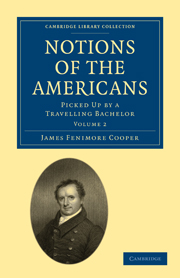Book contents
- Frontmatter
- Contents
- Lately Published
- LETTER I To the Count Jules de Béthizy
- LETTER II To the Abbate Giromachi
- LETTER III To the Same
- LETTER IV To the Count Jules de Béthizy
- LETTER V To the Baron Von Kemperfelt
- LETTER VI To the Abbate Giromachi
- LETTER VII To the Same
- LETTER VIII To the Count Jules de Béthizy
- LETTER IX To the Professor Christian Jansen
- LETTER X To Sir Edward Waller, Bart
- LETTER XI To the Same
- LETTER XII To the Professor Jansen
- LETTER XIII To the Count Jules de Béthizy
- LETTER XIV To the Abbate Giromachi
- LETTER XV To the Professor Christian Jansen
- LETTER XVI To Sir Edward Waller, Bart
- LETTER XVII To the Same
- LETTER XVIII To the Same
- LETTER XIX To the Count Jules de Béthizy
- LETTER XX To the Same
- LETTER XXI To Sir Edward Waller, Bart
- NOTES
LETTER IV - To the Count Jules de Béthizy
Published online by Cambridge University Press: 29 August 2010
- Frontmatter
- Contents
- Lately Published
- LETTER I To the Count Jules de Béthizy
- LETTER II To the Abbate Giromachi
- LETTER III To the Same
- LETTER IV To the Count Jules de Béthizy
- LETTER V To the Baron Von Kemperfelt
- LETTER VI To the Abbate Giromachi
- LETTER VII To the Same
- LETTER VIII To the Count Jules de Béthizy
- LETTER IX To the Professor Christian Jansen
- LETTER X To Sir Edward Waller, Bart
- LETTER XI To the Same
- LETTER XII To the Professor Jansen
- LETTER XIII To the Count Jules de Béthizy
- LETTER XIV To the Abbate Giromachi
- LETTER XV To the Professor Christian Jansen
- LETTER XVI To Sir Edward Waller, Bart
- LETTER XVII To the Same
- LETTER XVIII To the Same
- LETTER XIX To the Count Jules de Béthizy
- LETTER XX To the Same
- LETTER XXI To Sir Edward Waller, Bart
- NOTES
Summary
To you, who so stoutly maintain that the regulations of etiquette are necessary to order, it may be surprising to learn with how little of preparation the functionaries of this government get through the ceremonials of their offices. Just so far as etiquette is of use in facilitating intercourse, is it rational; but these people very rightly believe, that their institutions enable them to move on with far less than is practised in Europe. We will seize a moment to discuss the matter in some of its general bearings.
In point of style there is none whatever practised in addressing any one officer of the government. The naked appellation of the office is used in conversation sometimes, and commonly, though not always, in notes and letters. The tone can be taken best from the incumbents themselves. An invitation to dine at the “White House;” always runs, “The president requests the pleasure,” &c. A secretary commonly says, “Mr.————requests, &c.” Now, the best style, and that which is expected, is to reply in the same form. Thus a note should be addressed “To Mr.——,” to “the president,” “To Mr. Adams, (the secretary of state,)” or “to Mr. Southard (the secretary of the navy).”
The use of honourable to either, or indeed to any one else, is not deemed bon ton. It is done, however, quite frequently by those who are ignorant of the tone of the place.
- Type
- Chapter
- Information
- Notions of the AmericansPicked Up by a Travelling Bachelor, pp. 58 - 79Publisher: Cambridge University PressPrint publication year: 2009First published in: 1828



